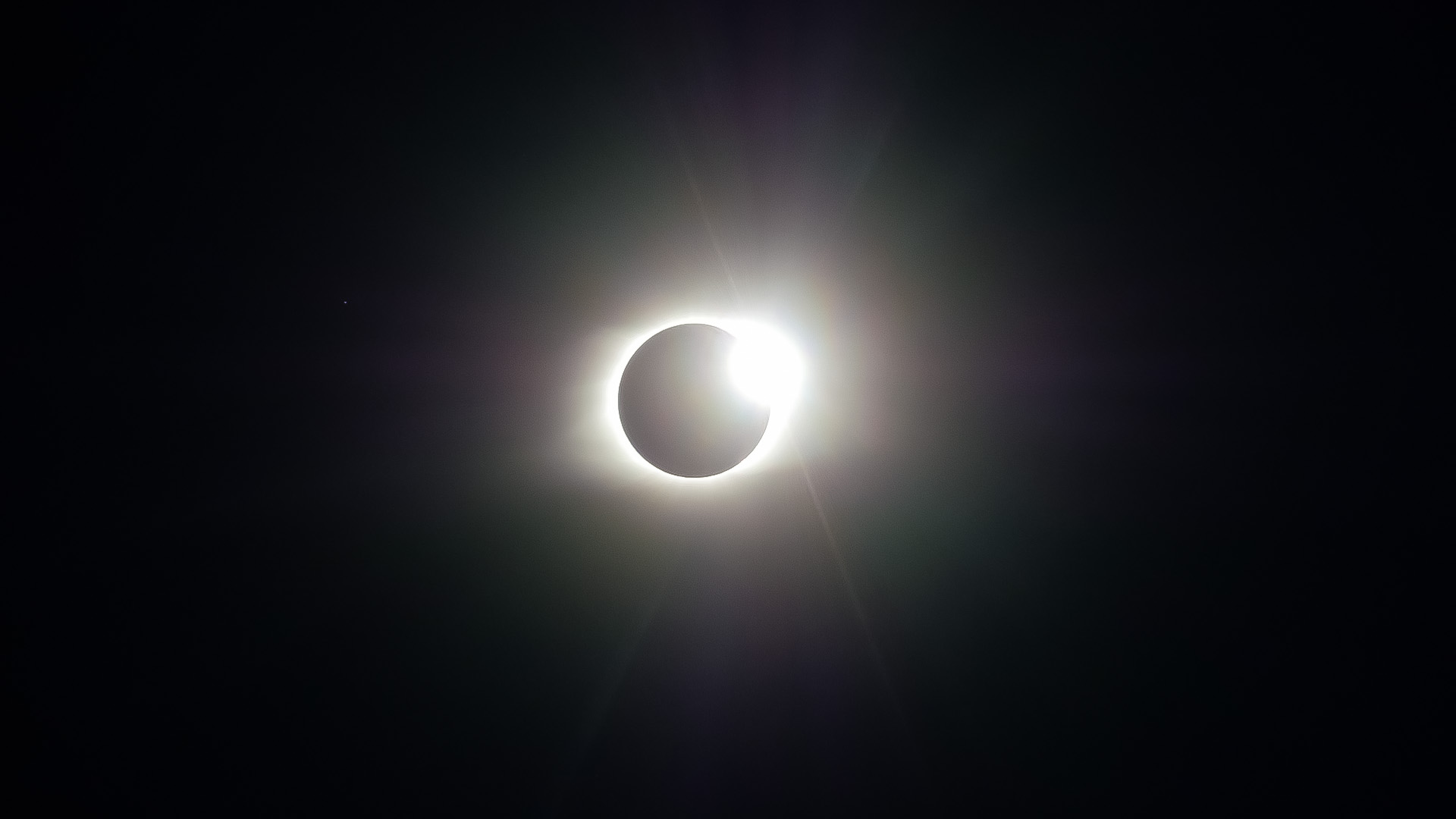
Chasing Totality: Lessons Learned from Photographing the 2017 Solar Eclipse
On August 21, 2017, I was greeted by my alarm clock at 6 am, and I rolled out of bed with excitement. I had been eagerly anticipating this day for the past couple of years, and the time had finally arrived. In a mere 9 hours, I would experience The Great American Eclipse, the first total solar eclipse visible from the United States in 38 years, a time before I was born.
My girlfriend and I got in her car and left Louisville, Kentucky, embarking on the 2 and a half hour drive south to a secluded park in Sharon Grove. The morning air was warm and inviting, and as we got on the interstate, the world seemed quiet and peaceful, with most people still tucked away in their homes. The gentle hum of the engine and the wind whipping over the car were the only sounds accompanying us on our journey.
As the sun peeked over the horizon, I was happy to feel its warmth and see its glow embrace my field of view. The golden rays cascaded across the landscape, painting the sky in a brilliant array of oranges and pinks. There were no clouds in sight, and the sun shone as if it were any other summer day, blissfully unaware of the celestial event that would soon unfold.
With each mile that passed, my anticipation grew, and I couldn’t help but imagine what it would feel like to witness the moon blocking the sun’s light, casting an eerie darkness across the land. Little did I know that this experience would be one that I would cherish for a lifetime.
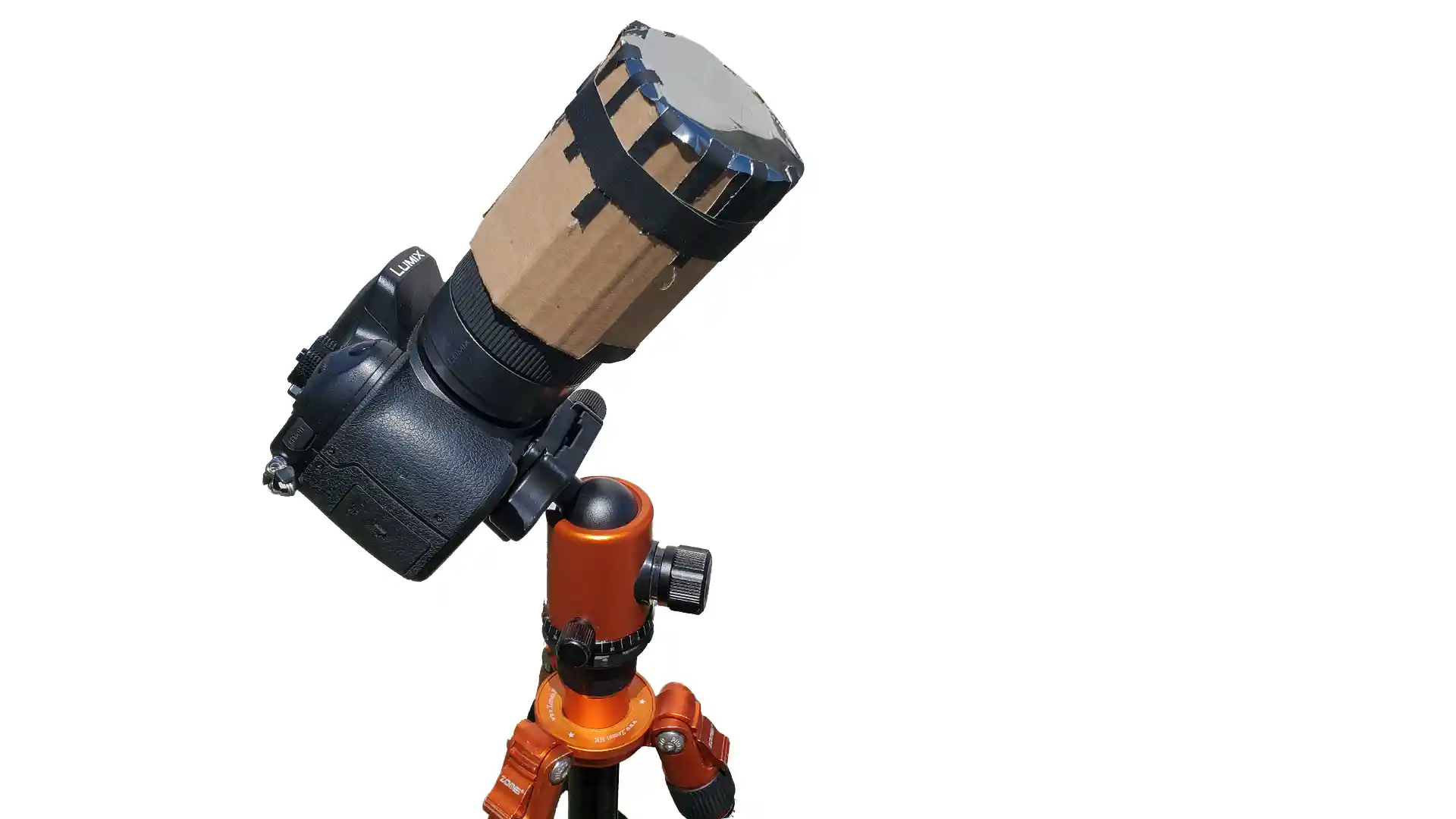
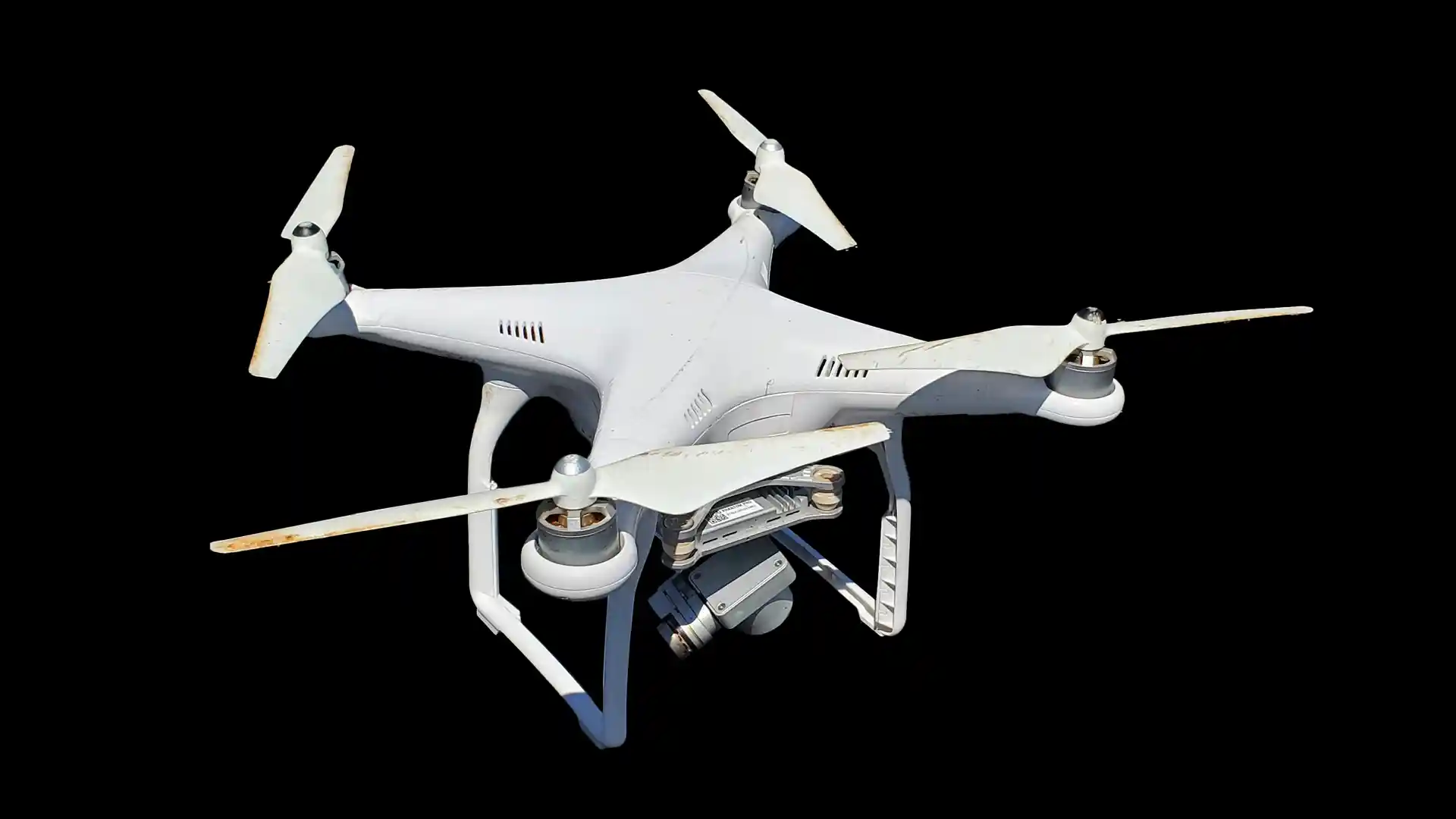
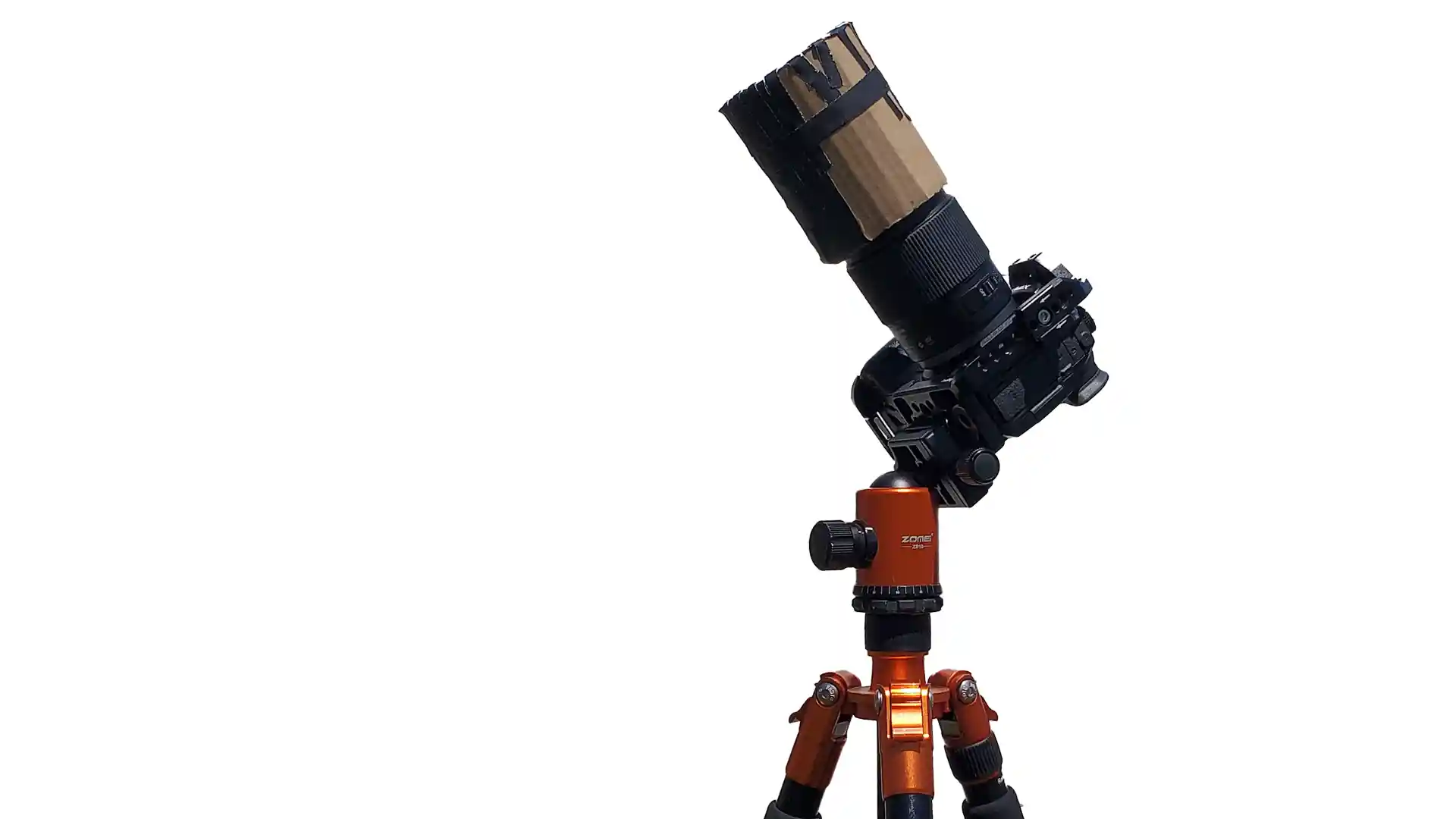
A Humbling Realization
My goal for the day, besides witnessing the eclipse with my own eyes, was to capture it with roughly $5,000 worth of imaging equipment that I used in my regular line of work as a videographer. With a decade of experience creating videos, I figured I’d be able to capture some amazing images. After all, I had seen hundreds of other stunning photos online, so how hard could it be to create something similar?
As it turns out, capturing images of an eclipse was a skill that I had yet to master. Unlike most of my professional video work, I had never recorded an eclipse before, and I could only guess what techniques and settings would yield the best results. It was a humbling realization that even with a decade of experience, I was still a novice when it came to this unique event in the sky.
Before I go any further into my eclipse photography adventure, I want to offer some advice. If anyone plans on seeing an eclipse and is considering recording or photographing it, I don’t completely recommend doing so. Not only is it incredibly difficult to capture from a technical standpoint, but you also only have one chance to get your shots. More importantly, the eclipse is a once-in-a-lifetime experience that is far more awe-inspiring when witnessed in person. I think most people would rather fully live in the moment, rather than fussing with exposure settings and framing up shots with their camera, potentially missing the breathtaking beauty unfolding before them.
Hindsight and Realization
With that out of the way, back to the story and what I learned from 2017. The sun, now higher in the sky, cast a brilliant light across the countryside, illuminating the lush green fields and towering trees that lined the highway. It was a picture-perfect day, and I couldn’t help but feel a mix of excitement and nervousness about my attempt to photograph this unique event.
When we finally arrived at the secluded park, I quickly set up my gear and began capturing the sun as the moon slowly crept across its face. My girlfriend decided to enjoy the experience without the distraction of a camera, and sat under a shaded picnic area, patiently awaiting the moment of totality.
As the eclipse progressed and I continued to adjust my cameras, I couldn’t help but feel that I wasn’t fully embracing the moment. I messed with my equipment, adjusting dials and framing, but realized I might be missing out on something truly special by focusing so much of my time on the three cameras I had brought along.
It wasn’t until later, when I reviewed my footage and reflected on the experience, that I realized I had made several mistakes in my attempt to capture the perfect shots. These errors, along with some things I did right, helped me create a list of dos and don’ts for anyone considering photographing or recording a total solar eclipse. Hopefully, this list will help others make the most of this experience while avoiding some of the issues I encountered.
Five Lessons Learned the Hard Way
Here are five don’ts to keep in mind when attempting to capture an eclipse:
1. Don’t record the sun before totality without using a solar filter. Thankfully, this is one of the few things I got right. I made a few solar filters from solar film, which is essentially like a pair of sunglasses for your camera, but designed specifically for looking at the sun. I’ve seen photos posted online where people ruined thousands of dollars worth of photography equipment by pointing their cameras at the sun without this protection. In some instances, the sun burnt the camera’s sensor, while in other situations, the sun actually melted the aperture blades in the camera’s lens.
2. Don’t use an extremely tight zoom on the sun. While it may look neat for the sun to fill the entire frame, unless you have specialized astrophotography equipment that can counteract the rotation of the earth, the sun will likely be out of the camera’s framing before the eclipse is over. Aim to have the sun take up no more than 20% of the frame. A photo or video that’s a little more zoomed out may seem less interesting, but it’s far better to have the sun in the shot, even if it’s smaller than you’d like. Remember, cameras have high resolutions now, and you can always crop the image later if desired.
3. Don’t touch your tripod during totality. This relates to the previous tip of having a wider shot. When I recorded the eclipse in 2017, my camera’s lens was too zoomed in, and the sun got to the edge of the frame as totality started. I spent a good 10 or 15 seconds fiddling with the tripod once totality began. That’s an eternity when it comes to something that only lasts a few minutes and is an event you may only get to see once in your life.
4. Don’t shoot the eclipse in slow motion. I thought it would be really interesting to see the sun’s rays from the corona dancing around in slow motion. It turns out the corona doesn’t really move all that much in real-time, and with some cameras, you lose the ability to capture audio in slow motion. The only situation where slow motion might be cool is a shot of the “diamond ring” effect as the sun peeks through the valleys of the moon right before and after totality. Slow motion just complicates things.
5. Don’t forget to remove your solar filter during totality. It’s unfortunate that I have to bring this up, but on the camera I had set up to take regular photographs, I completely forgot to remove the solar filter as the moon completely blocked the sun. When I looked for the images of totality, they turned out to be completely black. To avoid making the same mistake, consider setting a timer to go off right before totality with a label reminding you to remove the solar filter.
Three Ways to Create Lasting Eclipse Memories
Thankfully, the things I do recommend are much easier to do and will be more valuable to you when you look back on this day in the future.
1. Do look at the eclipse with your own eyes (once the moon has completely blocked the sun). Cameras simply don’t do justice to what you’re going to see during totality. Seeing a total eclipse is quite frankly an indescribable experience that you have to witness firsthand. Maybe someday cameras can capture the moment accurately, but for now, they simply don’t do the event justice.
2. Do take a group photo. Right before it gets completely dark, take a selfie or group photo of yourself and whoever you’re with. There are going to be tons of great photos posted online of the eclipse, and many will even look similar to each other. However, one photo that’s going to be completely unique and probably more meaningful is seeing yourself and who you were with that day. That’s a photo that you won’t find anywhere else online. Don’t worry about getting the perfect shot; the important thing is to capture the memory of being together during this incredible moment.
3. Do record audio of the eclipse. This was by far the neatest thing I captured during the eclipse, and it was completely by accident. Besides the insects and animals going nearly silent, which in itself was interesting, I was completely surprised when I went through the footage and listened to my girlfriend’s and my reaction to seeing the eclipse. I don’t get excited much, but it was so neat to hear genuine excitement and awe from both of us during this amazing event. You’ll never remember your exact thoughts from the moment, but you’re probably going to say some things during the eclipse that you’ll really cherish when you look back on the day.
To record audio, use a smartphone with a pre-downloaded audio recorder app, as you may not have cell service or be able to download an app in the path of the eclipse due to the influx of people in the viewing area. Place the audio recorder in the middle of your group for the best results. Keep in mind that if it’s windy, the wind noise might drown out what you say, but capturing your reactions is still worth a try.
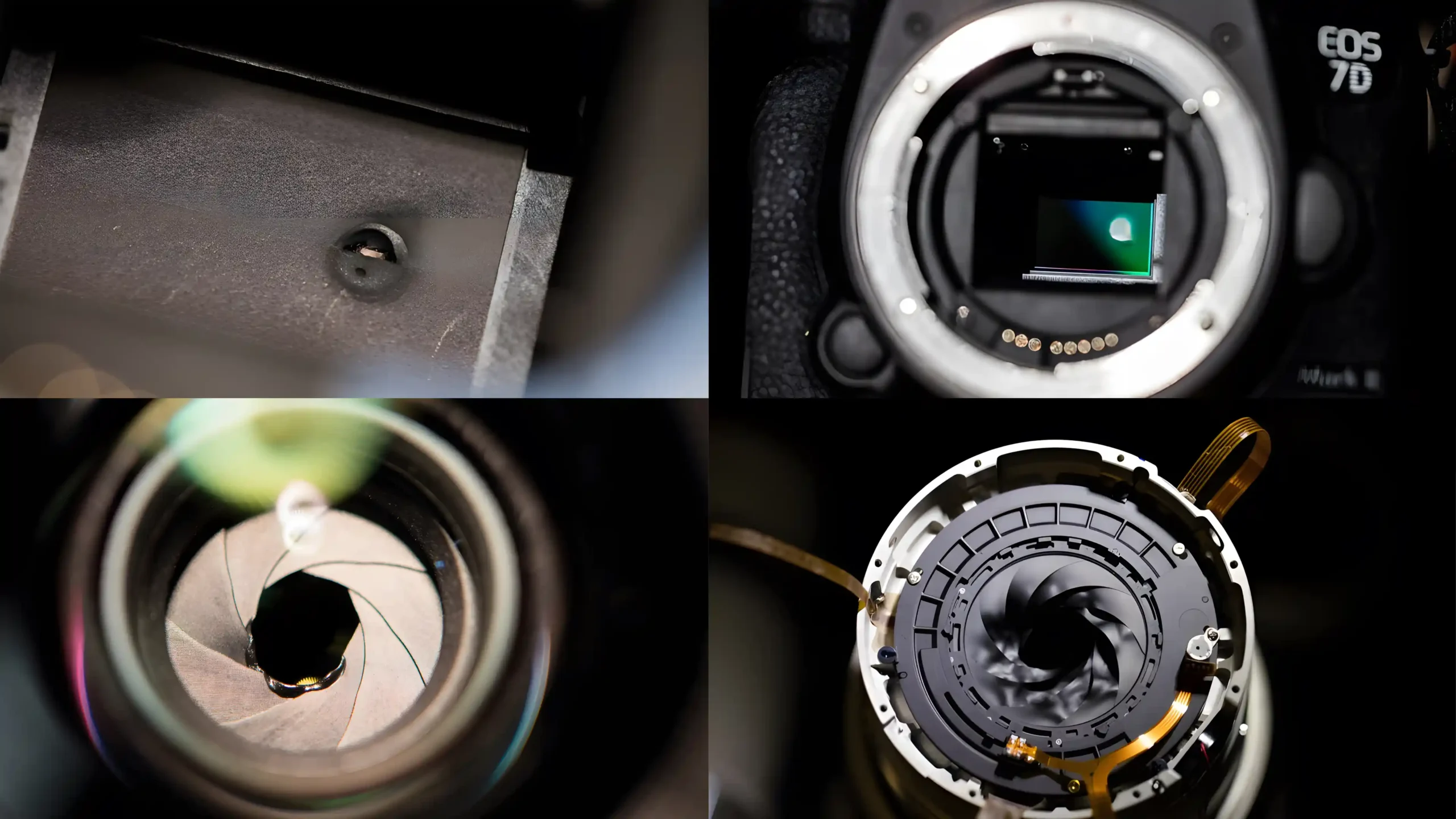
Click here to read the off site article accompanying these photos.
The Bittersweet Beauty of an Eclipse
With the advice I’ve given, there’s truly nothing that can fully prepare you for the awe-inspiring experience of witnessing a total eclipse. It’s like being granted superpowers, but only for a fleeting two to four minutes. No matter how much you prepare, you’ll never be able to do everything you wanted in those brief moments. The eclipse will be over in what feels like an instant, leaving you with a bittersweet sense of having witnessed something extraordinary that you may never experience again.
During totality, focus on being fully present in the moment. Look up at the sky and allow yourself to be immersed in the experience. Glance at the ground in the minutes leading up to totality, and you’ll see the world transformed, with crescent-shaped shadows cast by the leaves on the trees.
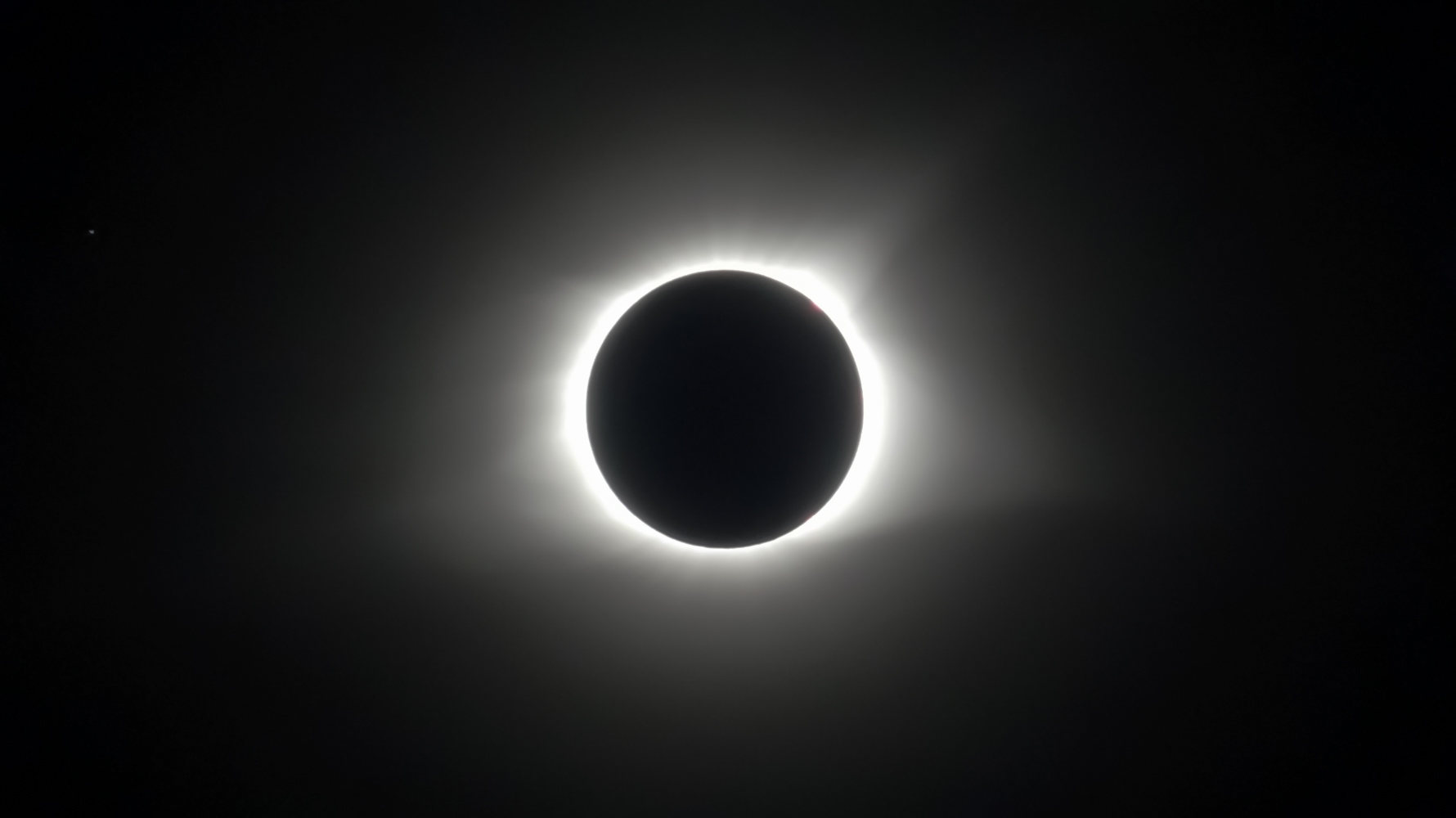
Embracing the Moment, Not the Camera
Personally I’d resist the temptation to capture the event through a camera lens. Photographs and videos can never do justice to the actual experience. Instead, cherish the memory of witnessing the eclipse in its entirety, without the distractions brought on by technology. The memories you create by being fully present will be far more valuable than any image you might capture.
As the moon drifts away from the sun and the light returns, you’ll be left with a profound sense of having been part of something truly incredible. The experience may be short-lived, and you may never have the chance to see another total eclipse again, but the memories and emotions will stay with you for a lifetime. It’s a powerful reminder to cherish life’s most amazing moments while they last.
Links to locations that look good for the 2024 eclipse
Google Maps link where I think some good spots might be.
https://www.google.com/maps/d/edit?mid=1x6epco0nQJ-1Mi5C5MlYveRJmCbdEAI&usp=sharing
Cloud Cover Map
https://www.pivotalweather.com/eclipse2024/?m=gefsens&p=blockedinsol_tle_2-mean&r=us_state_il_in
Totality Map
https://nso.edu/for-public/eclipse-map-2024/
It was August 21, 2017 and I was greeted by my alarm clock at 6am. I had been eagerly anticipating this day for the past couple of years. In a mere 9 hours I would experience The Great American Eclipse, the first total solar eclipse visible from the United States in 38 years, a time before I was born. As my girlfriend and I got in her car we left Louisville Kentucky and started the 2 and a half hour south South to a secluded park Sharon Grove Kentucky. As we got on the interstate I was relieved to feel the warmth from the sun as it peaked over the horizon and embraced my field of view. There were no clouds in sight and the sun shone as if it were any other day. My goal for the day, besides seeing the eclipse with my own eyes, was to capture it with roughly $5000 or so worth of imaging equipment I used in my regular line of work as a videographer. With 10ish years of experience creating videos I figured I’d be able to capture some amazing images, after all I had seen hundreds of other great photos online so how hard could it be to create something similar. It turns out capturing images of an eclipse was a skill that I didn’t possess. Like most things in life what initially seems easy turns out to require experience and as I’ve told other people looking to get into the same field of work I’m in, the only difference between myself and someone starting out is that I’ve messed up 10’s of thousands of more times than they have so I know what I should and shouldn’t do when I’m in a situation similar to one I’ve been in before. Before I go any further, if anyone’s going to see the eclipse and is considering recording it or photographing it, I can’t say I’d really recommend doing so, but to anyone reading this and still insists on giving it a go hopefully they can learn from a few of my mistakes. Here’s 5 don’ts to keep in mind when attempting to capture and eclipse. 1 – Don’t record the sun before totality without using a solar filter. Thankfully this is one of the few things I got right. I made a few solar filters from sheets of solar film and slipped them over my camera’s lenses, but I’ve seen photos posted online where people ruined 1000’s of dollars worth of photography equipment from pointing their cameras at the sun without this protection. In some instances the sun burnt the camera’s sensor and in other situations the sun actually melted the aperture blades in the camera’s lens. 2 – Don’t use an extremely tight zoom on the sun. While it may look neat for the sun to fill the entire frame unless you have specialized astrophotography equipment that can counteract the rotation of the earth, the sun will likely be out of the cameras framing before the eclipse is over. A photo or video that’s a little more zoomed out may seem less interesting than one where the sun fills the entire frame but it’s way better to have the sun in the shot even if it’s smaller than you’d like than get shots of the eclipse that’s partially out of frame. 3 – Don’t touch your tripod during totality. This relates to the previous tip. When I recorded the eclipse in 2017 my camera’s lens was too zoomed in and the sun was approaching the edge of the frame as totality started. I spent a good 10 or 15 seconds fiddling with the tripod once totality started. That’s an eternity when it comes to something that only lasts a few minutes that you may only have one chance in your life to see. Besides taking away from time looking up at the eclipse with your own eyes any footage that is wobbly is pretty much unusable. 4 – Don’t shoot the eclipse in slow motion. I thought that it would be really interesting to see the sun’s rays from the corona dancing around in slow motion. It turns out the corona doesn’t really move all that much in real time and with some cameras you lose the ability to capture audio in slow motion. 5 – Don’t forget to remove your solar filter during totality. It’s unfortunate that I have to bring this up but on the camera I had set up to take regular photographs I completely forgot to remove the solar filter as the moon completely blocked the sun. When I looked for the images that I thought were going to be really neat they turned out to be completely black. Thankfully the things I do recommend are much easier and will have way more value to you when you think about this day 20 years later 1 – Do look at the eclipse with your own eyes(once the moon has completely blocked the sun). Cameras simply don’t do justice to what you’re going to see during totality. Seeing a total eclipse is quite frankly an indescribable experience that you have to see with your own eyes. Maybe someday cameras can capture the moment accurately but for now they simply don’t do the event justice. 2 – Do take a group photo. Right before it gets completely dark take a group photo of yourself and whoever you’re with. There’s going to be tons of great photos posted online of the eclipse and many will even look similar to each other. One photo that’s going to be completely unique and probably more meaningful is seeing yourself and who you were with that day. That’s a photo that you won’t find anywhere else online. 3 – Record audio of the eclipse. This was by far the neatest thing I captured during the eclipse and it was completely by accident. Besides the insects and animals going nearly silent which in itself was interesting I was completely surprised when I went through the footage and listened to my girlfriend and my reaction to seeing the eclipse. I don’t get excited about it too much but it was so neat to hear genuine excitement and awe from both of us during this amazing event. You’ll never remember your thoughts from the moment but you’re probably going to say some things during the eclipse that you’ll really cherish when you look back on the day. Plus it’s pretty hard to mess up the audio….well unless it’s windy. With this advice I’ve given, there’s truly nothing that’s going to prepare you for seeing a total eclipse. This is one of if not the coolest things you’ll ever see in real life and while it’s exciting it’s also somewhat bittersweet. There’s not a really good way to describe this so I’ll use this analogy. Imagine you’ve been given superpowers, but there’s one caveat. You only have them for three minutes. Even if you’ve prepared for years beforehand there’s no way you’ll ever be able to do everything you wanted with your powers in those brief moments. This is unfortunately what seeing an eclipse is like. When you’re watching it you’ll realize this might be the coolest thing you’re ever going to see in life but it’s only going to last a few minutes. No matter how much you want to slow down time it’s going to be over way too soon. Have a plan beforehand of what you want to get out of it but just know the event’s going to be over in what feels like an instant. Personally I would just try to take in what you see in person and leave the photos and videos to someone else. The memories you create during the event will be way better than what you’ll see through a camera.